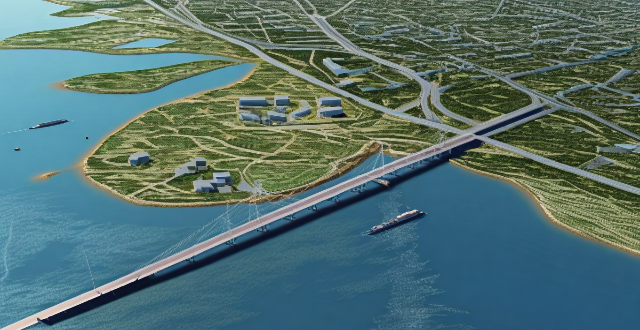The impacts of rising sea levels on coastal transportation systems, including roadways, bridges, port facilities, airports, and railway lines, can be categorized into direct and indirect effects. Direct effects include inundation of low-lying roads and railway tracks, damage to port facilities, vulnerabilities of coastal airports, and degradation of bridges and tunnels due to saltwater intrusion. Indirect effects encompass increased maintenance costs, changes in transportation routes, impact on trade and economy, environmental concerns, and public safety issues. To mitigate these impacts, adaptation strategies such as elevation and retrofitting, relocation, protective measures, flexible design, and improved planning are recommended.

Impacts of Rising Sea Levels on Coastal Transportation Systems
Introduction
Rising sea levels, a consequence of global warming and climate change, pose significant challenges to coastal transportation systems. These include roadways, bridges, tunnels, port facilities, airports, and railway lines. The impacts can be categorized into direct and indirect effects.
Direct Effects
1. Inundation of Roadways and Railway Lines: Low-lying coastal roads and railway tracks are at risk of being submerged, leading to disruptions in transportation services. This requires costly adaptation measures such as raising or relocating these infrastructures.
2. Damage to Port Facilities: Seaports, critical nodes in global trade networks, face threats from storm surges and higher water levels that can damage docks and other port infrastructure. This can lead to reduced efficiency and increased maintenance costs.
3. Airport Vulnerabilities: Coastal airports may experience runway flooding and damage to aircraft parking and maintenance areas, affecting flight operations and necessitating costly upgrades.
4. Bridge and Tunnel Degradation: Saltwater intrusion can corrode bridge supports and tunnel structures, shortening their lifespan and requiring more frequent repairs or replacements.
Indirect Effects
1. Increased Maintenance Costs: All coastal transportation infrastructure will require more frequent inspections and maintenance due to the harsher conditions caused by rising sea levels.
2. Changes in Transportation Routes: As some routes become impassable, new ones will need to be developed, which could mean longer travel distances and times.
3. Impact on Trade and Economy: Disruptions to coastal transportation systems can have far-reaching economic implications, affecting not just local communities but also national and international trade.
4. Environmental Concerns: Construction of new transportation infrastructure or modification of existing ones can lead to environmental degradation, such as habitat loss and increased pollution.
5. Public Safety Issues: With the potential for more frequent extreme weather events, there is an increased risk to public safety, including the danger of transportation accidents and difficulties in emergency response.
Adaptation Strategies
To mitigate these impacts, several adaptation strategies can be employed:
- Elevation and Retrofitting: Raising existing structures and building new ones to withstand future sea level rises.
- Relocation: Moving vulnerable infrastructure to safer, higher ground when feasible.
- Protective Measures: Constructing sea walls, levees, or implementing beach nourishment programs to protect shorelines and nearby infrastructure.
- Flexible Design: Adopting designs that can accommodate changing conditions, such as floating or modular structures.
- Improved Planning: Incorporating climate change projections into long-term transportation planning to ensure resilience.
Conclusion
The rising sea levels present significant challenges to coastal transportation systems, necessitating proactive and innovative approaches to ensure their sustainability and reliability in the face of ongoing climate change.